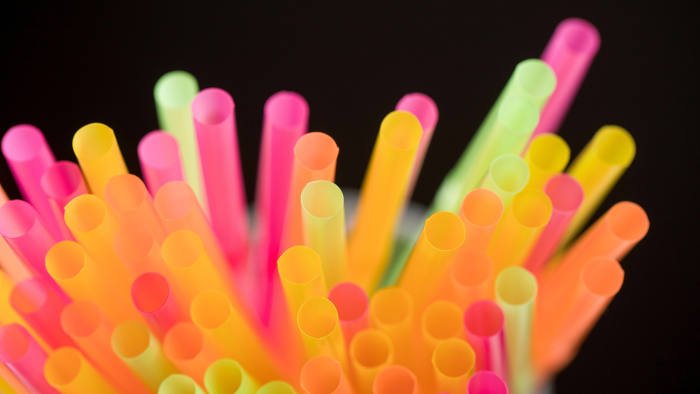Plastic, a durable, malleable, customisable material that is easy to manufacture, is arguably the definitive 20th century “mod-con”. It has proved irresistible to consumers and manufacturers who have been complacent about the collateral damage it causes the environment. But the tide — now awash with an additional 8m tonnes of plastic entering the oceans annually — is slowly turning.
The scale of the environmental problem is staggering. More than 6.3bn tonnes of plastic waste has been produced since the 1950s, more than half of which was produced in the past 16 years, and plastic production is expected to double again in the next 20 years. Despite higher recycling rates, large amounts of plastic leak into the environment. Estimates suggest there were will be more plastic than fish in the sea by 2050 and there is evidence that it is present throughout the human food chain. An ecologically and technologically superior replacement for many uses of plastic is long overdue.
Consumers have become avid recyclers. Yet this is not as good an outcome as it seems. Even when plastics are recyclable and put in a recycling bin, the majority still ends up in landfill or incinerators causing huge emission problems, or ends up in the sea. Recycling is a complex, expensive, low-margin business. It is made harder because, although 95 per cent of people in the US and EU markets recycle, only about 30 per cent recycle carefully enough for it to be usable. Even more responsibility lies with manufacturers who pay no direct penalty for choosing to use materials like black plastics and polystyrene, which are uneconomical or impossible to recycle. While the US and EU governments have preached recycling at home, they have for the most part outsourced it to countries with looser regulatory environments.
This is no longer an option. China, long the largest recipient of countries’ unwanted recycling, closed its doors to low quality shipments last year. Initially it was displaced to other countries in the region. Their governments are now also fed up with the west’s persistent nimbyism and are looking set to follow China’s suit. Companies and governments are being forced to do things differently.
In the past week, the European Parliament announced a ban on single-use cutlery, cotton buds, straws and stirrers from 2021 and declared that all non-replaceable plastic be reduced by 25 per cent by 2025. More than 250 businesses, governments and other organisations have signed the New Plastics Economy Global Commitment led by the Ellen MacArthur Foundation. Signatories want all plastic packaging to be reusable, recyclable, or compostable within seven years.
Nevertheless, growing demand for alternatives to plastic is running ahead of the scientific breakthroughs. These are needed to ensure the environmental impact of replacing it is a net positive. One popular proposition — using paper instead of plastic where feasible — could decrease the amount of natural carbon storage available (at least while trees regrow). This exacerbates global warming, a more pressing problem. Having turned consumers into keen recyclers, governments must ensure recycling works. This will require an internationally joined-up regulatory environment that ensures manufacturers bear the cost of using non-recyclable or uneconomical materials. Equally, consumers should continue to demand a circular plastic economy. This would be a world in which unnecessary and eco-unfriendly plastic is eliminated, all plastic packaging is 100 per cent reusable, recyclable or compostable. The waste must end.



